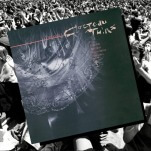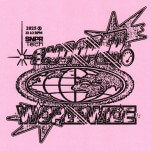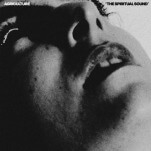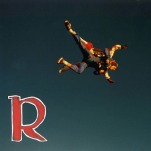The Blind Side: How CNN, Facebook, and NatSec Screwed Up
Effectiveness is in the eye of the beholder
Peter Macdiarmid / Getty
In the age of fake news and individual terror, we make nets to catch problems. But they have a weakness, and that problem is particularity: the systems created by institutions like CNN, Facebook, and the American NatSec (national security) community are applied arbitrarily and without care. Often, they cause more problems than they solve. Why aren’t their solutions working? Three reasons.
First, the solutions are poorly designed. They are poorly designed because they do not reflect how conditions are on the ground. Why are they designed poorly? Because of the tools these institutions have. This leads to the second problem: the institutions are using the wrong tools. When you have a hammer, every problem looks like a nail. The problems these institutions face are not nail problems. But the institutions prefer one kind of tool—the hammer of power—so they design their solutions to serve the tool, instead of designing the solution to solve the problem. Finally, these institutions use the wrong tools and wrong design because they are operating from the wrong mindset. They suffer from an ideology which screens out other options. This is a story about how and why blind spots happen, and what to do about it.
HOW THE INSTITUTIONS “SOLVED” THEIR PROBLEMS
To fight the plague of fake news, CNN threatened an anonymous critic. According to Daniel Victor at the Times:
A CNN story on Tuesday about an anonymous Reddit user who created a widely circulated video of President Trump wrestling the network’s logo to the ground has inspired multiple backlashes. Some criticized it as a form of blackmail. Others raised issues of journalism ethics over the network granting conditional anonymity to the user. … It continued: “CNN reserves the right to publish his identity should any of that change.”
But as Steven Perlberg of BuzzFeed notes:
Even among fellow media types, CNN’s strangely worded contingency has been viewed as, at best, highly unconventional. Internally, some at CNN say they recognize that the “reserve the right to publish” line makes the piece sound hostile, when they had initially hoped it would address that there was no deal with HanAssholeSolo to withhold his name.
To protect us against terror, the government prosecutes hundreds of people who are distant from any act of violence. To quote The Intercept, “Most of them never even got close to committing an act of violence.” The news site continues:
Since the 9/11 attacks, most of the 805 terrorism defendants prosecuted by the U.S. Department of Justice have been charged with material support for terrorism, criminal conspiracy, immigration violations, or making false statements — vague, nonviolent offenses that give prosecutors wide latitude for scoring quick convictions or plea bargains … Very few terrorism defendants had the means or opportunity to commit an act of violence. The majority had no direct connection to terrorist organizations. Many were caught up in FBI stings, in which an informant or undercover agent posed as a member of a terrorist organization. The U.S. government nevertheless defines such cases as international terrorism.
To save us from online terror, Facebook focuses on jihadists. Yet they ignore White nationalists. According to Sheera Frankel at the Times:
Responding to complaints that not enough is being done to keep extremist content off social media platforms, Facebook said Thursday that it would begin using artificial intelligence to help remove inappropriate content. Artificial intelligence will largely be used in conjunction with human moderators who review content on a case-by-case basis.
As Sam Biddle points out, “Facebook is no ordinary company; its sheer scale means it is credited as a force capable of swaying elections, commerce, and, yes, violent radicalization.” Yet Facebook overlooks much:
Keeping the (to put it mildly) highly motivated membership of ISIS and Al Qaeda off any site is no small feat; replacing a banned account or deleted post with a new one is a cinch. But if Facebook is serious about refusing violent radicals a seat at the table, it’s only doing half its job, as the site remains a cozy home for domestic — let’s be frank: white — extremists in the United States, whose views and hopes are often no less heinous and gory than those of the Islamic State. In Facebook’s post, ISIS and Al Qaeda are mentioned by name 11 times, while the word “domestic” doesn’t appear once, nor are U.S.-based terror networks referenced in any other way. That gap in the company’s counterextremism policy is curious.
Take the Bundy Family Vacation in 2014:
Throughout the entire ordeal, the occupiers (and their sympathizers nationwide) made extensive use of the social web (including Facebook) to coordinate and spread their message (the Bundy Ranch Facebook group has nearly 200,000 followers today). Federal prosecutors and investigators with the FBI’s Domestic Terrorism Operations Unit zeroed in on the occupiers’ use of Facebook, Oregon Public Broadcasting reported at the time. Since the occupation, finding anti-government extremism on Facebook remains easy. This seems at odds with Facebook’s zero-tolerance policy.
Twitter suffers from much the same problem. It loves to temporarily ban people who use curse words, but has no problem with fascists online.
This is not a case of me or the media trying to catch large, powerful institutions in hypocrisies and contradictions. Rather, we are dealing with recurrent and systemic cases of widespread myopia. What gives?
PROBLEM 1: BAD DESIGN
First is the problem of design: the systems are not well-built. The solutions that Facebook, CNN, and NatSec have applied are curiously structured. The solutions are not designed to be wise, but to exercise power of a specific kind. The designers of these systems didn’t solve the problems. They merely changed the space around the problem. They altered the ground so their institutions could exercise their power more fully. Rather than search for a new solution, CNN uses its investigative apparatus to discover a Redditor, and then agrees not to use its broadcast power to not dox him.
Given a threat to American life, the NatSec does not invent new ways of finding terrorists, but asks for more leeway to seize people for less reason. Given the problem of hate speech online, Facebook does not hire more people or consider the question of what makes an extremist, but uses word-searches and conventional wisdom to apply its blocking policy ever-wider. They do what they have done, just louder and dumber, like a drunk proposing engagement.
In battle, a conquering general does not merely command superior forces, but actively changes conditions on the ground, shapes the battlefield and the outside world to favor him. That’s fine in combat, but terrible for anything that isn’t war. Facebook, CNN, and NatSec are not building new tools to solve these problems. They are using the same tool they have always used: power.
In each case—online terror, fake news, and terrorism in general—these solutions were designed in a burst of concern over some new plague. The demand for the response came from an aggrieved, authoritative class who wanted results, like, yesterday. And so, given the tools at their disposal and the limited maneuvering time, the designers created these solutions: a network response that skirts close to bullying, a banning campaign with obvious preferences, and a justice system that sends people to jail without reason.
PROBLEM 2: THE WRONG TOOL LEADS TO WRONG DESIGN
Power is how these institutions solve most of their dilemmas. It is the first place they look and their last refuge in times of crisis, a very present salvation for all the boondoggles of institutional life. When institutions act to solve any single problem, they are actually solving two problems:
1. Whatever the original problem is.
2. Demonstrating to the world that your institution has, and is worthy of, power.
This is why so many of these solutions are both wide-spread and klutzy. Power loves generality. Unless a concerted effort is made for finesse, power will seek to apply itself widely. Using the wrong tool leads to the wrong design. By using power, you are obliged to create the environment in which it can be used, like a club owner required to dim the lights so the band can play. Universality is a fine thing in other contexts, but a poor policy in punitive measures.
Power is a strange instrument: to show that you have it, you must use it, but you cannot use it too often. No matter how much power you have, your allies and enemies must think you have more, so they will flatter, respect, and fear you. George R.R. Martin puts it well in Clash of Kings:
Varys smiled. “Here, then. Power resides where men believe it resides. No more and no less.”
“So power is a mummer’s trick?”
“A shadow on the wall,” Varys murmured, “yet shadows can kill.”
Much in the same way you can never be too rich or too thin, you can never have too much power. Apart from manners, there is a strategic reason rich people don’t talk about money. The vague concept of “wealthy” is much sexier, and much more compelling and effective, then saying “I am worth $5,302,924.04 at this moment.”
It’s like the monster in a horror movie: the thing you are imagining is always scarier than what they put on screen. Without exception, the looming unknown triumphs any compilation of makeup and computer graphics. Specificity is the essence of getting things done, but it is the absolute hobgoblin of imagination.
Therefore, when institutions have to use power to solve their problems, they must to do so in a way which establishes that they are in charge. They cannot afford to do otherwise. The moments that you have to use power, you must use it absolutely. These institutions would be wiser to do so in ways which were effective, but the need to demonstrate control is so strong that they rarely consider this side of affairs. Yet without exact, rational, reflective solutions, these solutions are no solutions at all. Rather, they will be the clumsiest form of damage control, designed to show the institutions in power can still distribute influence, and little else.
PROBLEM 3: THE WRONG MINDSET
Wrong design comes from using the wrong tools. But why use the wrong tool to begin with? It has to do with ideology. In each case, the people in charge were focused on obtaining a single result, a single output, and took nothing else into account. In the panic to avoid terror (on and offline) and to track down an anonymous Reddit user, the institutions failed to consider the wider outcomes of their actions.
In his book “How to See Like a State,” James Scott discusses the nature of broad-brush solutions. Scott writes that concentrated power (of any kind) tries to make the world comprehendible: to change and alter the world, it must make the world legible. To build roads, you need a map of the kingdom. To trade quickly, it is good to have one standard of measurement. To have a truly efficient army, it helps if every soldier has a surname. Legibility is not inherently wrong, Scott notes. What happens is that ideology blinds, and that power makes feedback and resistance irrelevant. Scott writes:
Certain forms of knowledge and control require a narrowing of vision. The great advantage of such tunnel vision is that it brings into sharp focus certain limited aspects of an otherwise far more complex and unwieldy reality. This very simplification, in turn, makes the phenomenon at the center of the field of vision more legible and hence more susceptible to careful measurement and calculation. Combined with similar observations, an overall, aggregate, synoptic view of a selective reality is achieved, making possible a high degree of schematic knowledge, control, and manipulation.
After a brief tour into the disastrous history of “scientific forestry” in Germany, Scott concludes:
The metaphorical value of this brief account of scientific production forestry is that it illustrates the dangers of dismembering an exceptionally complex and poorly understood set of relations and processes in order to isolate a single element of instrumental value. The instrument, the knife, that carved out the new, rudimentary forest was the razor-sharp interest in the production of a single commodity. Everything that interfered with the efficient production of the key commodity was implacably eliminated. Everything that seemed unrelated to efficient production was ignored. Having come to see the forest as a commodity, scientific forestry set about refashioning it as a commodity machine. Utilitarian simplification in the forest was an effective way of maximizing wood production in the short and intermediate term. Ultimately, however, its emphasis on yield and paper profits, its relatively short time horizon, and, above all, the vast array of consequences it had resolutely bracketed came back to haunt it.
Doctrine, of the kind practiced by institutions, can be a willful self-blinding. This is the purpose of ideology, after all: to drive other possibilities out of contention.
There are no end of Boomers lecturing millennials about how they need to buy more diamonds or condos or whatever. The solutions are always patronizing and clueless: “Stop drinking Starbucks” or “Collect change from your couch.” There is a simple solution: the Boomer power structure needs to pay millennials better wages and give them jobs. But somehow, this never enters into the discussion. This is the nature of ideology.
When NatSec imposes sanctions which starve populations of distant nations, it never crosses their minds that the people of other countries are not our enemies. Why not? Ideology. There is a single output that the government wants—compliance of some nation’s leadership. There is a sole measure that Boomer scolds care about—consumption rates among the youngs. No other measurement matters. The way you screen all other feedback out is ideology. Ideology blinds.
The application of power is often considered as a question of ethics and of efficiency. But it is also a matter of art: of seeing the map and the terrain at the same time. The practice of governing is to know the problem, at every scale.
We are often told to think outside the box for solutions. People with close focus are often said to have forgotten the forest for the trees. These are sayings that only distant viewers could claim as true. Beneath the oak, a blade of grass never forgets it is part of a greater whole, and those inside the box are closest to the problem. Sometimes the problem and solution are the box; and the grassroots knows things the tallest trees have forgotten.







































